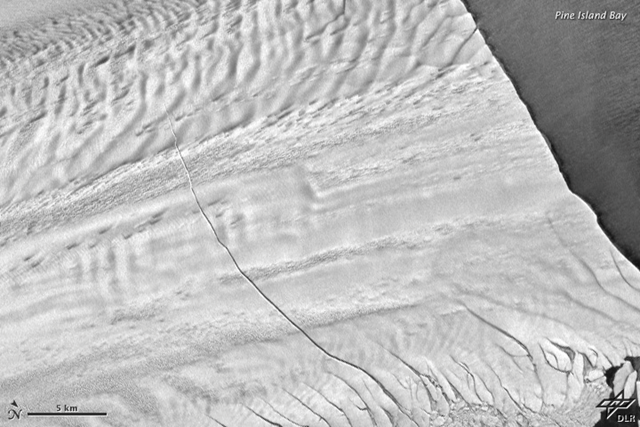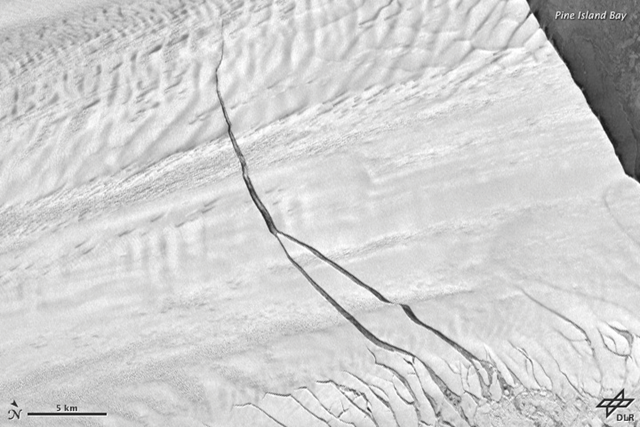Image of the Day: Aerial View of Growing Rift in Antarctica’s Pine Island Glacier, September 2012
 Rift in Pine Island Glacier, 31 October 2011
Rift in Pine Island Glacier, 31 October 2011  Rift in Pine Island Glacier, 14 September 2012
Rift in Pine Island Glacier, 14 September 2012
Caption by Adam Voiland
19 October 2012 On 14 October 2011, scientists flying over Antarctica’s Pine Island Glacier (PIG) ice shelf as part of NASA’s Operation IceBridge mission made a startling discovery: there was a massive rift running about 29 kilometers (18 miles) across a part of the glacier’s floating tongue. The rift was 80 meters (260 feet) wide on average, and 50 to 60 meters (170 to 200 feet) deep. When the crack reaches the other side of the ice shelf, it will send a huge new iceberg drifting into Pine Island Bay. Since discovering it, researchers have monitored the rift closely with remote sensing equipment. This pair of images, acquired by a synthetic aperture radar on Germany’s TerraSar-X satellite, shows how it lengthened and widened between 31 October 2011, and 14 September 2012. In May 2012, a second crack formed west of the original one. Download the animation to see how this part of the ice shelf and the rift has changed since May 2011. Rifts similar to this form on the Pine Island Glacier’s ice shelf every five-to-six years. “What makes this one remarkable is that it will lead to calving of a significantly larger iceberg than PIG has produced in the last few decades,” noted Joseph MacGregor, a research scientist at the University of Texas at Austin. “It is likely that the front of PIG will be farther back than any time in the recent past after the iceberg calves,” he said. Satellites observed large icebergs calving off Pine Island Glacier in 2001 and 2007, but upcoming IceBridge flights offer an opportunity to monitor a calving event from closer range. Operation IceBridge resumed science flights with NASA’s DC-8 on 12 October 2012. Scientists participating in the mission will be watching the crack closely for any new signs of change.
Looks like the gap is closing to me I
This reminds me of my windshield after a rock – or something – hit it. According to my blog science, all indications are that after a brief hiatus it will quickly spread into a spiderweb of cracks and then it will need to be replaced.
You're welcome.
Planets, what are you gonna do?